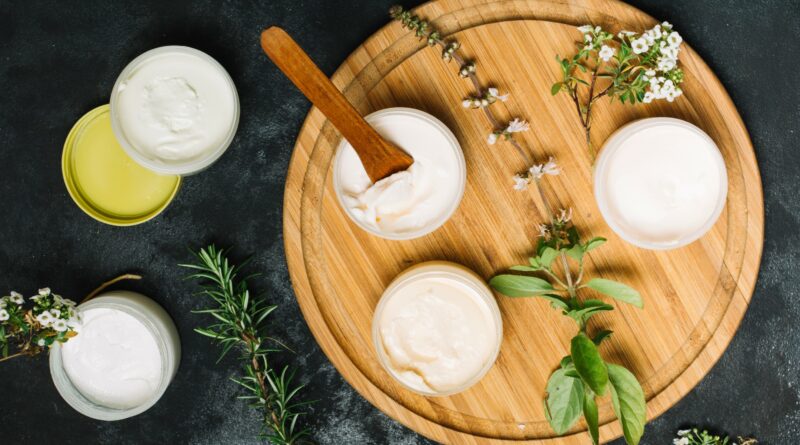The Rise of Vegan Cream: A Dairy-Free Revolution
In recent years, the world has seen a surge in plant-based products, driven by an increasing number of people adopting vegan, lactose-free, and environmentally conscious lifestyles. One of the most notable trends in this shift is the rise of vegan cream, a dairy-free alternative that is making waves in kitchens across the globe, including India. Whether it’s to cater to vegan diets, reduce dairy consumption, or embrace sustainable practices, vegan cream has become a staple in both households and restaurants.
This article explores the reasons behind the growing popularity of vegan cream, its benefits, and how it’s contributing to the broader dairy-free revolution.
Understanding Vegan Cream
Vegan cream, much like its dairy counterpart, is a creamy, often rich product that can be used in cooking, baking, and as a topping for desserts. However, instead of milk or cream sourced from animals, vegan cream is typically made from a variety of plant-based ingredients, such as nuts (like cashews or almonds), coconut, soy, oats, or even seeds. These plant-based options mimic the creamy consistency and flavor of traditional dairy cream but without the use of animal products.
Vegan cream is a versatile ingredient that can be used in a variety of dishes, from savory sauces to sweet desserts. It can be found in multiple forms, including whipped cream, cooking cream, and sour cream substitutes. For those following a vegan lifestyle in India, this offers a solution to an otherwise limited selection of non-dairy products.
Why the Shift to Vegan Cream?
- Health Consciousness and Lactose Intolerance
One of the key drivers behind the rise of vegan cream is the increasing awareness of health and dietary needs. Many individuals are turning to plant-based options because of the health benefits they offer. Traditional dairy cream, while delicious, is high in saturated fats and cholesterol, which can contribute to heart disease and other health issues when consumed in excess. In contrast, vegan cream alternatives are often lower in unhealthy fats and free from cholesterol, making them a better choice for those trying to maintain a healthier diet.
Additionally, lactose intolerance is another factor that has contributed to the popularity of vegan cream. In India, lactose intolerance is common, with over 70% of the population being affected to some degree. This condition makes it difficult for individuals to digest dairy products, leading many to search for dairy-free alternatives. Vegan cream, which is free from lactose, provides an excellent substitute for those who want to avoid discomfort without sacrificing taste or texture in their meals.
- The Vegan Lifestyle in India
The adoption of a vegan lifestyle is rapidly gaining momentum, particularly among the younger population in India. As awareness about animal rights, health, and environmental issues grows, more people are choosing to eliminate animal products from their diets. India has long been associated with plant-based diets, especially in the form of vegetarianism, but the shift toward veganism is a recent and powerful trend. Vegan cream fits perfectly within this lifestyle, allowing individuals to enjoy the indulgence of cream-based dishes without contributing to the dairy industry’s environmental toll.
The growth of the vegan lifestyle in India has been supported by a number of factors, including an increase in plant-based food offerings and the growing availability of vegan substitutes in mainstream markets. Vegan creams are now becoming more accessible in urban areas, with local brands and international ones expanding their presence.
- Sustainability and Ethical Concerns
Environmental and ethical concerns are key motivators for the switch to vegan cream. The dairy industry is one of the largest contributors to greenhouse gas emissions, water pollution, and deforestation, which is prompting many consumers to seek alternatives. Vegan cream, being plant-based, has a significantly lower environmental footprint than its dairy counterpart. The production of plant-based ingredients requires fewer resources, such as water and land, and produces fewer emissions. This makes vegan cream an attractive option for those aiming to reduce their carbon footprint.
Moreover, ethical considerations surrounding animal welfare also play a role in this shift. Factory farming practices in the dairy industry often involve harsh conditions for animals, which has led many people to reconsider their consumption of animal-based products. By choosing vegan cream, individuals can enjoy a creamy, indulgent experience without supporting an industry that exploits animals.
- Flavor and Versatility
One of the greatest misconceptions about vegan alternatives is that they lack flavor and richness. However, vegan creams are available in a wide range of flavors and textures that can rival traditional dairy products. For example, cashew-based vegan cream has a smooth, rich texture, while coconut cream offers a slightly sweet and aromatic flavor that complements many dishes. With a growing array of vegan cream options on the market, cooks and bakers have found that these dairy-free alternatives can easily be swapped in for dairy cream in almost any recipe.
Whether you’re using vegan cream in savory Indian curries, sauces, or sweet treats like vegan ice cream, the versatility of plant-based creams makes them a perfect substitute. For dessert lovers, vegan creams can even be whipped and used as a topping for cakes, pies, and pastries, proving that indulgent, creamy delights don’t have to come from cows.
- Vegan Curd India: A Complementary Trend
The rise of vegan cream is part of a larger trend in India towards plant-based dairy alternatives, such as vegan curd. Vegan curd, typically made from soy, coconut, or almond milk, offers a non-dairy substitute to traditional yogurt and can be used in similar ways. For people who follow a vegan curd in India, vegan cream presents an excellent complement, as it can be used to make dairy-free lassi, dressings, or even as a topping for fruit bowls and granola.
Both vegan cream and vegan curd contribute to a dairy-free diet that is not only kind to animals but also supports sustainable food production. These plant-based products are helping reshape the Indian food landscape, enabling people to enjoy traditional dishes in a new, cruelty-free way.
The Future of Vegan Cream in India
As demand for plant-based products continues to grow, the availability of vegan cream will likely increase. India, with its rich history of plant-based cuisine and an ever-growing population of vegan and health-conscious consumers, is poised to become a major market for dairy-free alternatives. Companies are already noticing this shift and are innovating to offer more varieties of vegan cream tailored to local tastes and preferences.
Vegan cream has the potential to revolutionize cooking in India by offering both health and environmental benefits while maintaining the flavor and richness that people love. It’s not just a passing trend—it’s part of a broader, more sustainable way of eating that embraces compassion for animals and care for the planet.
Conclusion
The rise of vegan cream marks a pivotal moment in the dairy-free revolution, offering a delicious, ethical, and sustainable alternative to traditional cream. As more people in India and around the world adopt vegan lifestyles and reduce their dairy consumption, products like vegan cream will continue to play a key role in transforming the food industry. With its health benefits, versatility, and positive impact on the environment, vegan cream is not just a passing fad but a vital part of the future of food. Whether you’re lactose intolerant, vegan, or simply looking to make a more environmentally-conscious choice, vegan cream provides a rich, creamy solution without the guilt.




